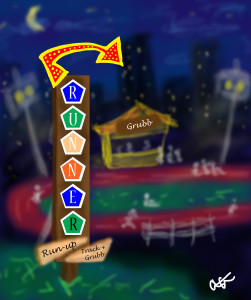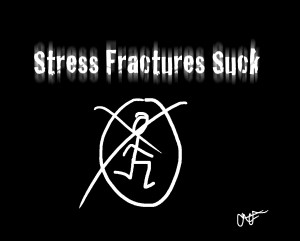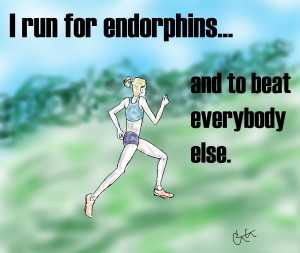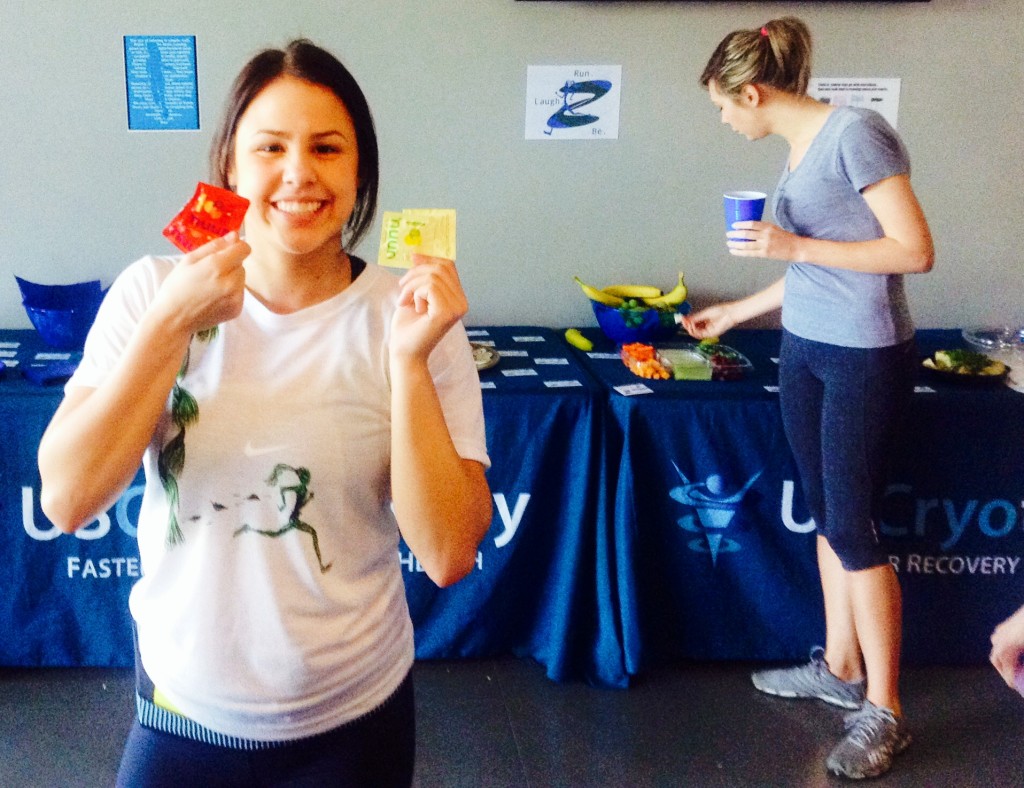I had a fun dialogue with a friend and editor the other day:
“‘How to Train for a Marathon in 5 Minutes a Week’ and ‘Eat 20 Apples a Day to PR’ (clear exaggeration but you get the point). I know a lot of people like those types of articles but over the years I’ve have my fill.”
“Thank goodness you hate the ‘fluff crap’ kinda articles too. I die a little inside every time I’m asked to do one, writing that stuff makes my brain numb.”
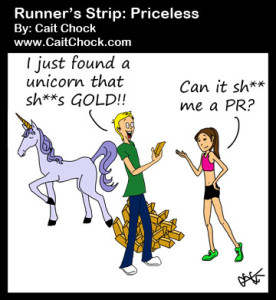
There were more little barbs in there and witticisms but you get the picture. The ‘fluff’ crap; it’s all over the web and even in the magazines and websites ‘we’ us ‘real runners’ read and subscribe to. We can’t escape it and let’s be honest the masses are looking for a kind of ‘quick fix’. So, the headlines screaming BIG rewards LITTLE work draws people in. It sells. Websites and magazines are businesses after all, so even though I’m sure it kills a few editors and writers every.single.time they must do a ‘fluff crap’ article, they do it. Gotta put food on that table.
The thing is though, which ‘we’ ‘real runners’ know is:
* there’s no magic bullet
* no super secret way to getting better and stay fit
* eating an apple at 3:19pm to drop 30 seconds off your 5k PR aint gonna do it
Most people don’t want to hear that it takes:
* a h*ll of a lot of hard work
* motivation
* motivation even when you aren’t motivated
* pushing yourself
* hurting in workouts and races
The sufferfest that is training and racing…that probably wouldn’t be a magazine the general public would just LOVE reading about. Better to think that a protein smoothie with chia seeds is all that’s required and will do the trick. Training and all that stuff, well…that’s second tier, right? 😉

The ‘training fluff crap’ I think actually parallels what writer, coach, sports nutritionist, and athlete Matt Fitzgerald, writes about in his latest book DIET CULTS. I literally devoured that read in two days so do check it out, I think most fitness minded folks will relate to a lot of what he’s saying and laugh because as athletes we’re able to ‘sniff out’ lots of the ‘diet fluff crap’ mainstream media and individuals try to get us to buy into. I will revisit this book later because I’ve got both an article on RunBlogRun coming out and after that is published do a review on this blog. So hold tight, but in the mean time check out DIET CULTS.
Getting back to the fitness and running ‘fluff’, I find that it really is only doing a disservice to the individuals who really are motivated or the ones just starting out in the sport. Coming to the realization that it’s hard work over really anything else is a learning curve all runners go through. Experience teaches us that.
Every single runner has their own journey, the progression of getting crazier and crazier more experienced and for lack of a better term ‘hardcore into’ our sport. That journey makes each runner who they are and it’s important to learn lots of those lessons yourself. At the same time, it’s a shame that falling into the misconception that certain foods or cramming 4 months of training into 2 weeks doing a run only every other Tuesday WILL make you a better runner. Because by hiding the truth you’re only stunting the progress of the runner who really does want to be their best.
Certainly the ‘fluff’ sells and the driven, self-motivated folks who are ‘real’ runners [I only define ‘real’ runners not based on speed at all, but in spirit and how motivated they are…if you’re a runner you know it in your bones.] are the minority. But the numbers of runners are growing and it proves there are eager, motivated people looking to embark on their running journey.
Welcome to crazy town.
So here’s some straight shooting for you:
* It’s going to hurt.
* There’s no ‘secret’ to getting faster and staying fit.
* Motivation is your weapon, consistency reigns supreme.
* Patience sucks but it’s required.
* Learn that unnecessary suffering isn’t going to make you better. Oh running, filled with all those fine lines we must tread.
But here’s the BEST part:
* There’s a sick sort of high and remarkable afterglow to that hurt when you’ve pushed through it.
* Nothing is more rewarding than watching yourself get faster and more fit.
* Realizing your body can DO things you never dreamed possible is far more satisfying than any pack of abs or what your vehicle of performance looks like.
* Running will effect, and improve you in all areas of life.
* Runners are tough as s*t.
It’s important to realize that clearly certain foods and a healthy diet will help your training, lifestyle adjustments (hello more sleep!) will too. But even a healthy diet with 10 hours a sleep at night is useless sans training. Take your ‘fluff’ and shove it. #run
More Reads:
5 Ways Runners Can Use Trail Running to Get Faster



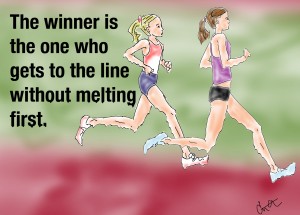

 To run and race your best it’s critical you’ve got the right mindset. Dr. Jim Afremow has made it his mission to help runners and athletes of all sports hone their mental training. Just as important and the physical workouts, an athlete’s mind can create a champion or turn into one’s own worst enemy. I wanted interview Dr. Afremow both because I respect his body of work and level of expertise and also because, let’s be honest, the psychology of our sport in straight-up fascinating! Often time elite athletes have trouble putting into words exactly how they get into gamer mode…so read on to hear a mental game’s coach put words to the ability:
To run and race your best it’s critical you’ve got the right mindset. Dr. Jim Afremow has made it his mission to help runners and athletes of all sports hone their mental training. Just as important and the physical workouts, an athlete’s mind can create a champion or turn into one’s own worst enemy. I wanted interview Dr. Afremow both because I respect his body of work and level of expertise and also because, let’s be honest, the psychology of our sport in straight-up fascinating! Often time elite athletes have trouble putting into words exactly how they get into gamer mode…so read on to hear a mental game’s coach put words to the ability:


